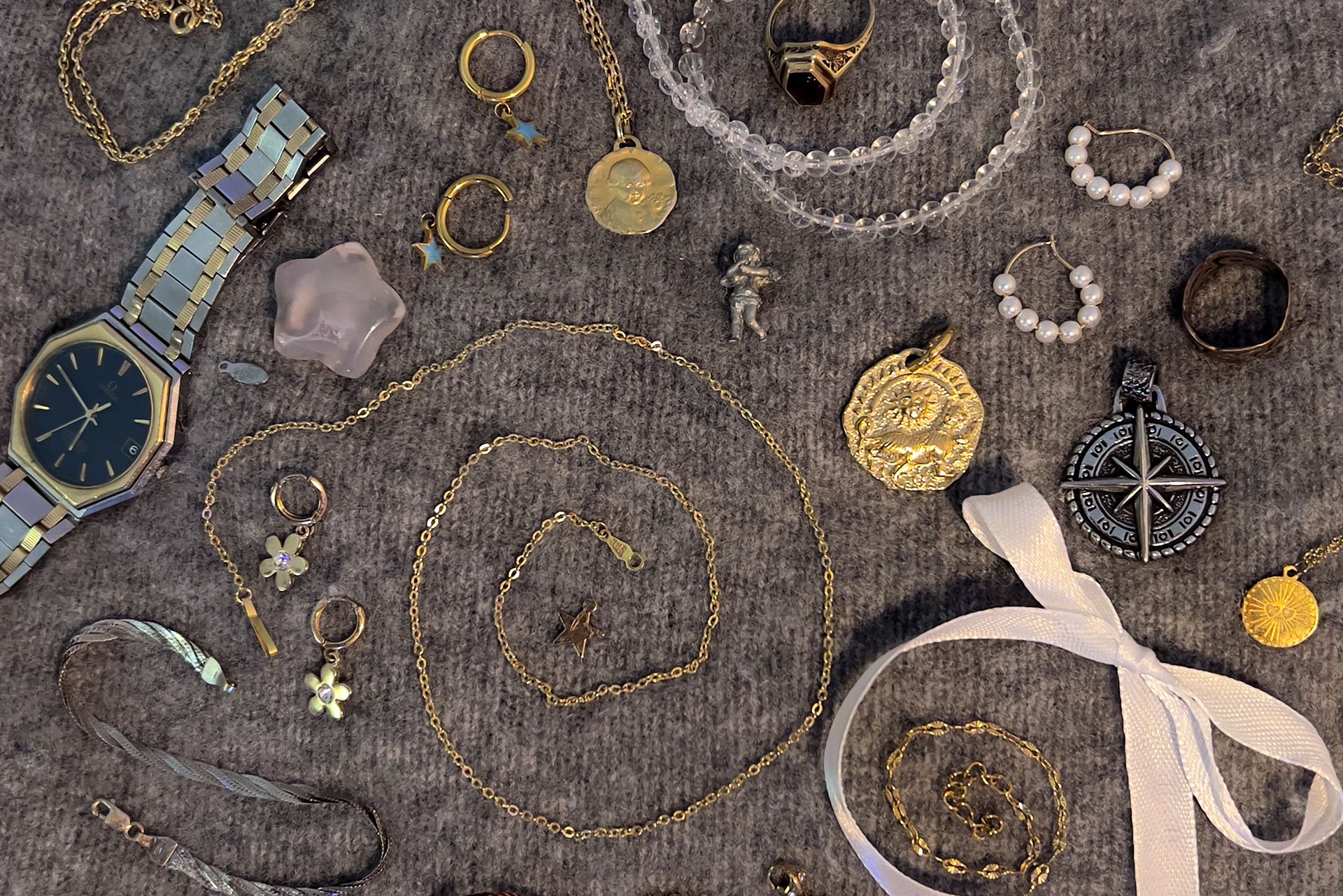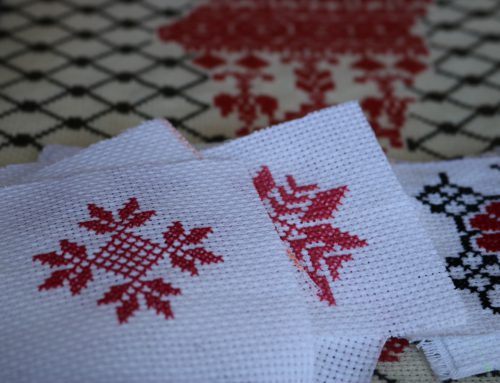BY Isabeau Delacour & Sheena Macmillan
“It was time for a change,” says Beom-Joong Kim, a devoted jewelry collector. “I wanted to feel more in synch with my style.”
Kim, 21, has decided that his shopping tendencies would change for the better by buying slow fashion instead of fast. He now sources his jewelry solely from artists who make them by hand.
“I started looking into modes of production and felt that handmade jewelry not only fit my style better, but also aligned with my values. I felt I needed to be a responsible consumer,” he says.
Kim is part of a growing trend. In 2022, 38 per cent of Vogue readers preferred long lasting and ethically crafted, high quality fashion pieces. This number has been slowly but surely increasing.
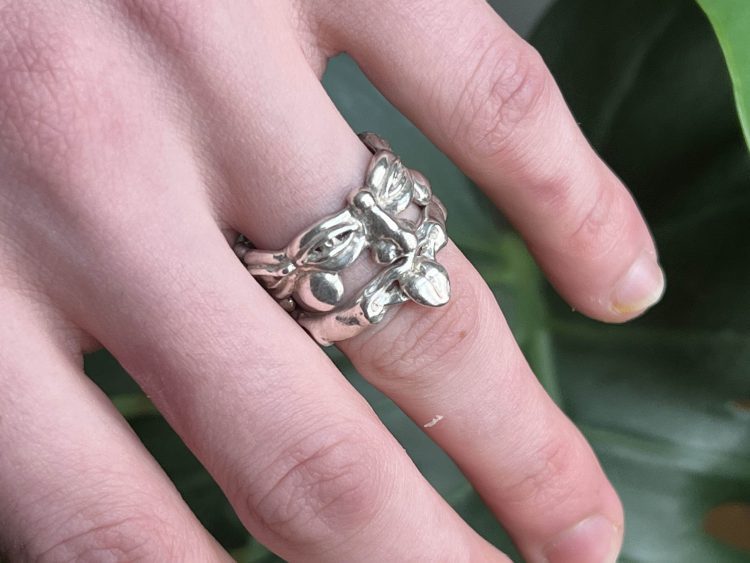
Someone’s hand decorated with a ring. Photo by Isabeau Delacour.
“I think it is still a small group of individuals who are interested in slow fashion and I think it is going to take time to educate and inspire,” says Davide Lettieri, Polimoda University teacher of Consumer Behavior courses. “I certainly think that the younger generation is asking for more transparency, and as a result this could lead them to consume slower fashion because of that information search. It is a slow process.”
One of the reasons for this increasing demand for slow fashion may be the rising awareness that fast fashion is extremely harmful to the environment. According to Earth.org, 92 million pieces of textile go to waste every year because of mass production. That’s the equivalent of a garbage truck full of clothes dumped every second.

What are the differences between slow fashion and fast fashion? Media by Isabeau Delacour.
Additionally, workers for big factories are faced with extremely poor working conditions. 85 per cent earn only two to six cents for every piece of clothing produced and most of them work over 60 hours per week.
Another reason why people may want to purchase slow fashion is that they just want to invest in durable, high quality pieces that they will be able to keep for a long time. Fast fashion does not offer the best quality to its clients according to Lettieri.
“In a nutshell, we can say that [fast fashion] is fast to adopt trends, to manufacture and to consume but, as a result, also fast to dispose of. Quality is not the number one component to the formula, it’s more about speed to market,” he says.
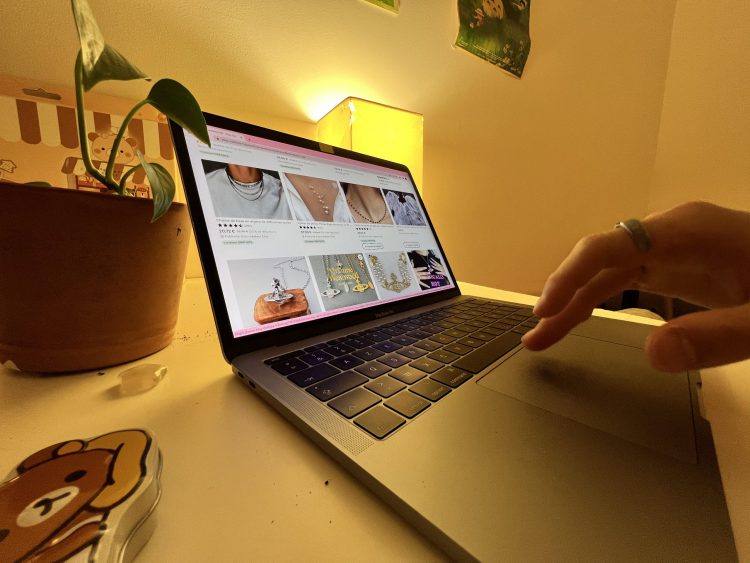
A person scrolling on Etsy’s collection of jewelry. Photo by Isabeau Delacour.
“I do think there’s part of the public that is tired of things breaking, falling apart. People are starting to rethink their purchases on a whole as they’re more conscious about the environment,” says Lettieri. “There’s a variety of reasons why people are thinking about the quality of their clothing and also the messaging is out there to invest in something that will last in the long term.”
This growing interest for slow fashion can only mean good things for small businesses. Camille Desmarais-Plouffe makes handmade jewelry pieces under her artist name Petite Forge. Although she started her business only a year ago, she already feels that fast fashion has affected her pricing.
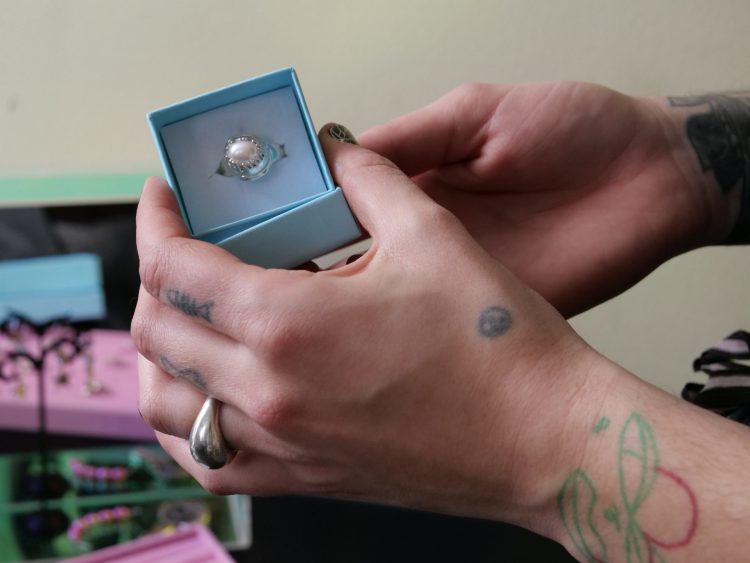
Camille Desmarais-Plouffe showing off one of her custom made rings. Photo by Isabeau Delacour.
“Although I know what my jewelry is worth, I also sometimes feel embarrassed about my prices. Of course I want to sell but I also know that there are many products that may look like mine but of cheaper quality, made in factories,” she says.
Desmarais-Plouffe’s jewelry, which she describes as “joyous,” is hand crafted from start to finish in sterling silver. They take multiple playful forms, of clouds, flowers, stars and classy, geometric shapes. It takes her two to three hours to make only a pair of earrings. She sells her pieces online and makes some of them custom to her clients’ desires.
Slideshow: The making of a Petite Forge jewelry piece. Photos by Isabeau Delacour.
For artists like her, the meticulousness that it takes to make handmade jewelry is demanding, but rewarding in the end. She says that it’s always heartwarming when people come and pick up her creations, whether it be rings or earrings, her two specialties.
“It’s really nice, it’s the best feeling actually. Every time someone buys from me, I’m like ‘Oh my god, me?’ I try to be really confident in my work but I do get impostor syndrome sometimes so every time I sell a piece I tell myself, wow someone is interested in my very own work!”
And it has even become a sort of pride to own handmade items, she says.
“People are really proud to say ‘I got this from a small business!’ and I really notice how their eyes shine as if they were saying ‘I want to support my community, my city and I am proud to do so.”
Purchasing handmade pieces is not only ethically great but it also allows you to be close to what you choose to wear, a quality in fashion that tends to be overlooked. Lettieri stresses the importance of being in sync with your fashion pieces.
“I like the idea of having a relationship with my clothing and I think clothing is such a big part of your expression and identity,” he says. “It becomes a part of you and I think that is such a beautiful thing with clothing.”
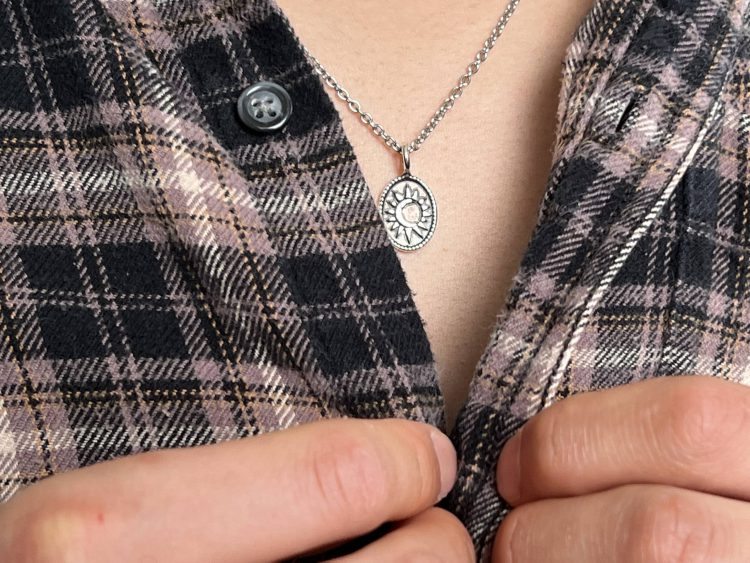
A necklace hanging on someone’s collarbone. Photo by Isabeau Delacour.
Kim had purchased a lot of jewelry in his life, mostly of lower quality, until he decided that he needed pieces that he could grow attached to.
“I like the idea of supporting creators that infuse their pieces with passion, because then it makes the jewelry more meaningful,” he says. “I realized owning jewelry from artists that I will always cherish a certain piece and associate it to a period of my life. Sometimes one of my pieces will make for a good story.”
“I’m glad I can now say that my ring is handmade, if ever someone asks,” Kim says. “It makes me feel cool.”
Follow the journey of a handcrafted piece of jewelery. Video by Sheena Macmillan.
